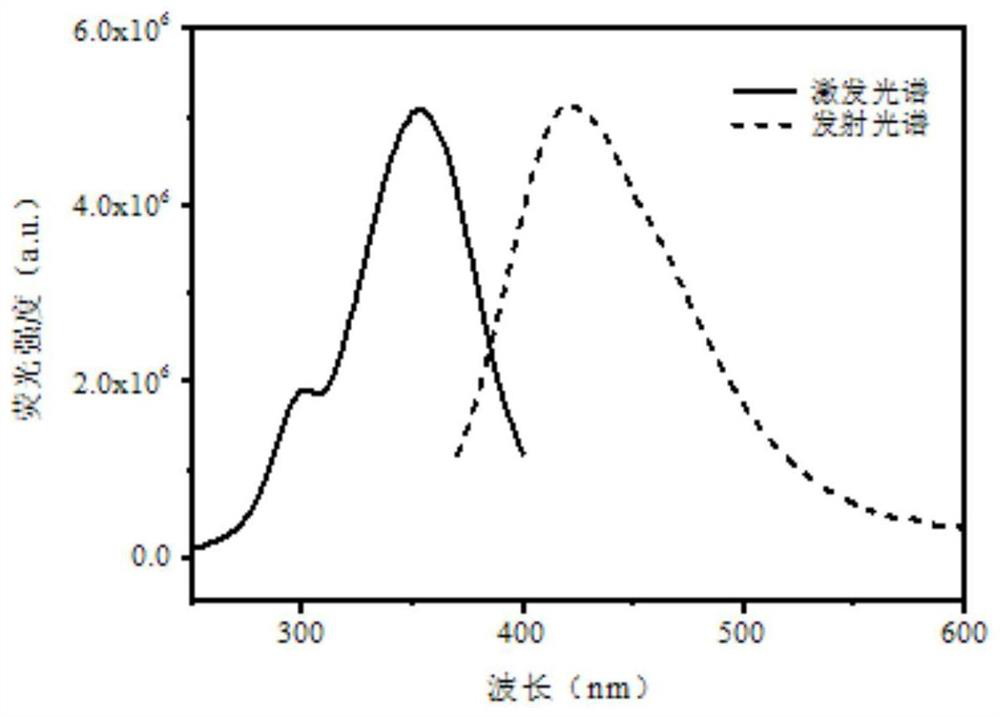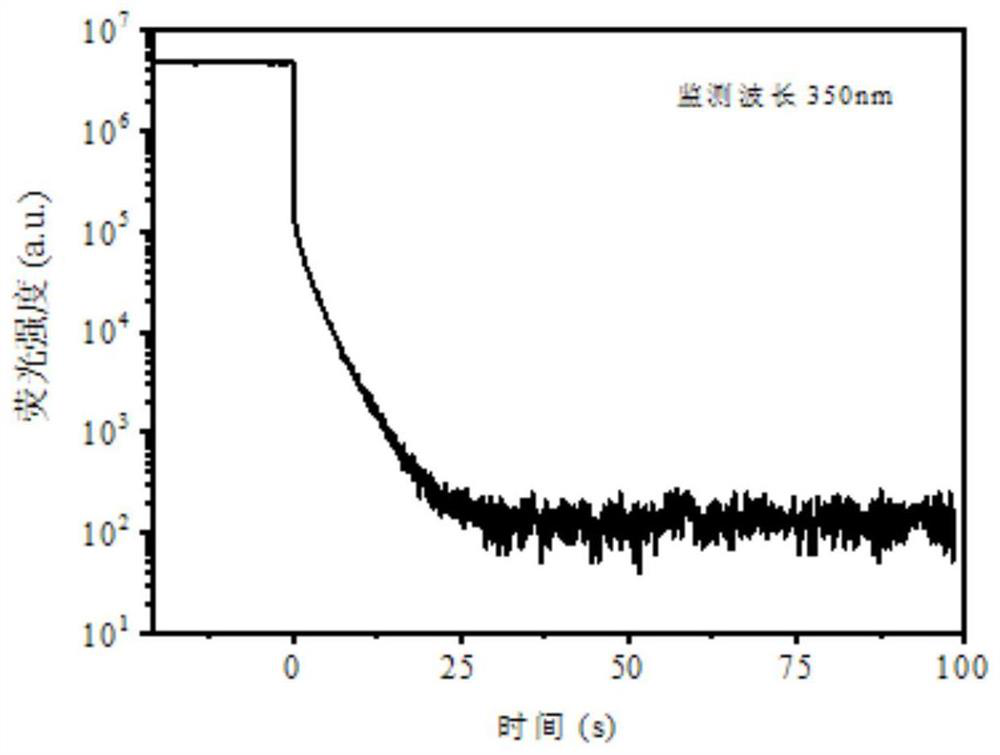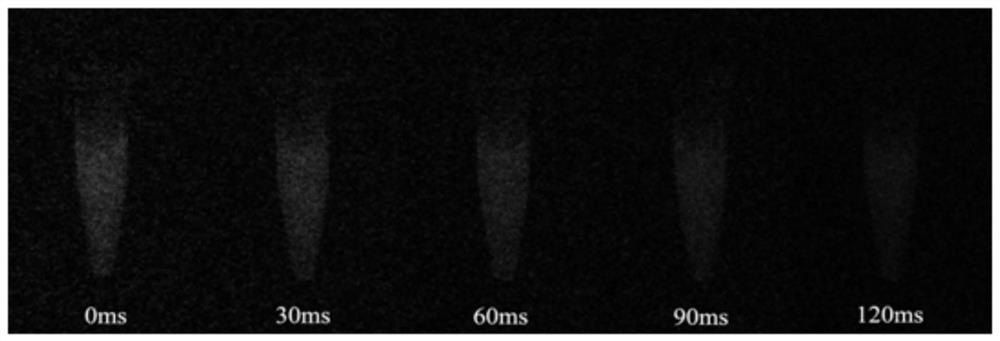Blue room-temperature phosphorescent carbon dot and preparation method thereof
A room temperature phosphorescence, carbon dot technology, applied in chemical instruments and methods, nano-carbon, nano-optics, etc., can solve the problems of undiscovered patent publications, difficulty in generating room temperature phosphorescence, poor phosphorescence performance, etc., achieve good phosphorescence performance, avoid Background interference, good stability
- Summary
- Abstract
- Description
- Claims
- Application Information
AI Technical Summary
Problems solved by technology
Method used
Image
Examples
Embodiment 1
[0025] Water-soluble room-temperature phosphorescent carbon dots were synthesized by hydrothermal method, and the reagents required for the synthesis of the carbon dots were polyacrylic acid (PAA) and 3-aminopropyltrimethoxysilane (APTES). The volume of polyacrylic acid (PAA) is 0.826mL, and the volume of 3-aminopropyltrimethoxysilane (APTES) is 2.369mL. Mix them with 56.73mL of deionized water and react in a hydrothermal kettle at 200°C for 8h After the reaction, the reaction solution was put into a dialysis bag and dialyzed for 2 days to obtain a carbon dot dialysate, and then the obtained carbon dot dialysate was transferred to a 100mL round bottom flask, 2mL ammonia water and 8.0mL TEOS were added, and refluxed at 105°C for 5h. Dialysis was continued for another 3 days, and finally the blue room temperature phosphorescent carbon dots were obtained. Its excitation and emission spectra are shown in figure 1 As shown, the solid line part is the excitation spectrum, and the d...
Embodiment 2
[0027] Water-soluble room-temperature phosphorescent carbon dots were synthesized by hydrothermal method, and the reagents required for the synthesis of the carbon dots were polyacrylic acid (PAA) and 3-aminopropyltrimethoxysilane (APTES). The volume of polyacrylic acid (PAA) is 1.055mL, the volume of 3-aminopropyltrimethoxysilane (APTES) is 3.943mL, mix them with 44.90mL of deionized water, and react in a hydrothermal kettle at 210°C for 6h After the reaction, the reaction solution was put into a dialysis bag and dialyzed for 2 days to obtain a carbon dot dialysate, and then the obtained carbon dot dialysate was transferred to a 100mL round bottom flask, 1.5mL ammonia water and 5.0mL TEOS were added, and refluxed at 95°C for 6h , and then continued dialysis for 3 days, and finally obtained the blue room temperature phosphorescent carbon dots. The excitation wavelength of carbon dots is 355nm, the emission peak is at about 417nm, and the phosphorescence duration can reach 30s....
Embodiment 3
[0029] Water-soluble room-temperature phosphorescent carbon dots were synthesized by hydrothermal method, and the reagents required for the synthesis of the carbon dots were polyacrylic acid (PAA) and 3-aminopropyltrimethoxysilane (APTES). The volume of polyacrylic acid (PAA) is 1.376mL, the volume of 3-aminopropyltrimethoxysilane (APTES) is 4.500mL, mix them with 24.0mL of deionized water, and react in a hydrothermal kettle at 220°C for 10h After the reaction, the reaction solution was put into a dialysis bag and dialyzed for 2 days to obtain a carbon dot dialysate, and then the obtained carbon dot dialysate was transferred to a 100mL round bottom flask, 1.0mL ammonia water and 7.0mL TEOS were added, and refluxed at 100°C for 3h , and then continued dialysis for 3 days, and finally obtained the blue room temperature phosphorescent carbon dots. The excitation wavelength of the carbon dots is 349nm, the emission peak is at about 423nm, and the phosphorescence duration can reach...
PUM
| Property | Measurement | Unit |
|---|---|---|
| Volume | aaaaa | aaaaa |
| Volume | aaaaa | aaaaa |
| Volume | aaaaa | aaaaa |
Abstract
Description
Claims
Application Information
 Login to view more
Login to view more - R&D Engineer
- R&D Manager
- IP Professional
- Industry Leading Data Capabilities
- Powerful AI technology
- Patent DNA Extraction
Browse by: Latest US Patents, China's latest patents, Technical Efficacy Thesaurus, Application Domain, Technology Topic.
© 2024 PatSnap. All rights reserved.Legal|Privacy policy|Modern Slavery Act Transparency Statement|Sitemap



